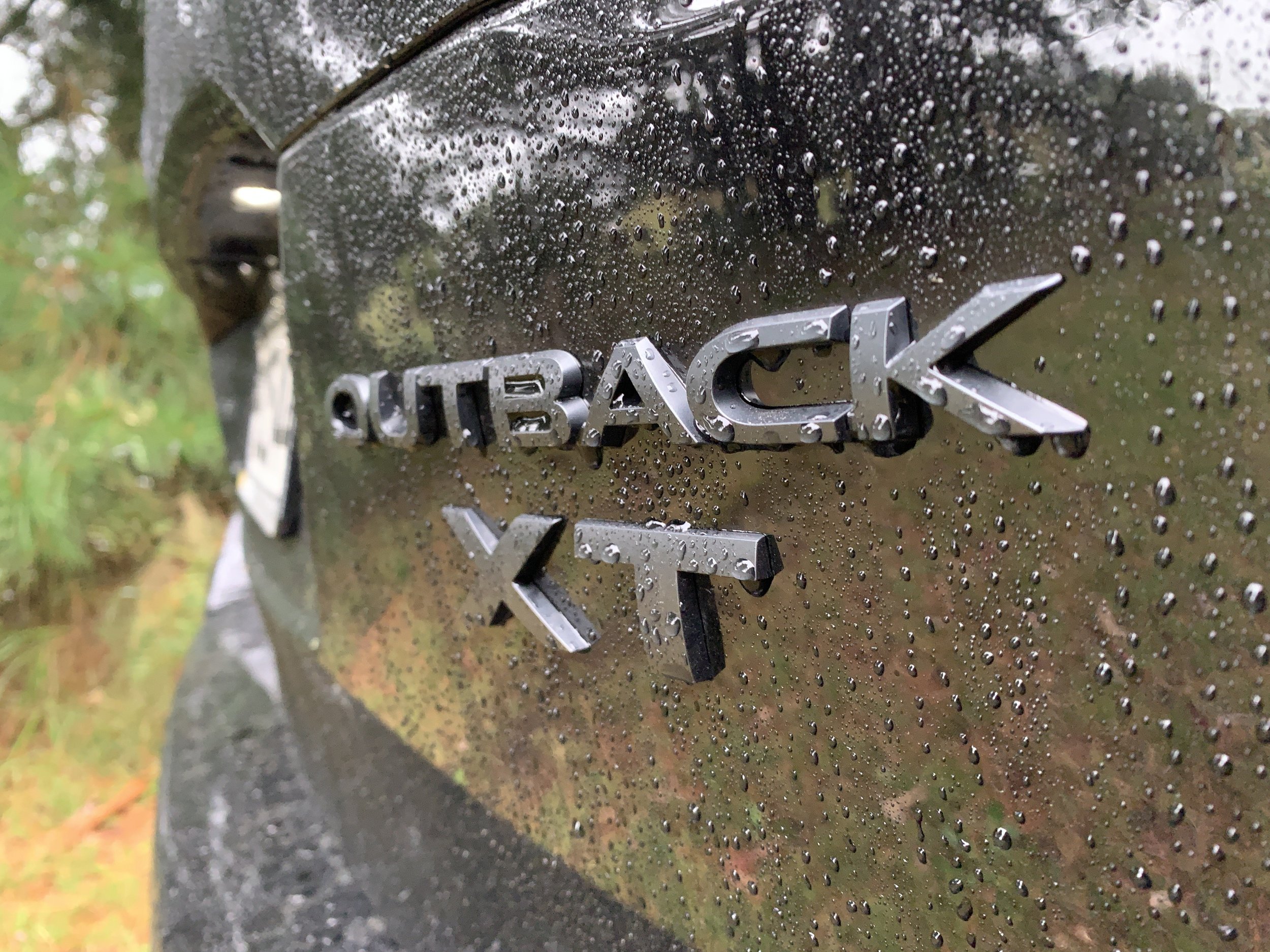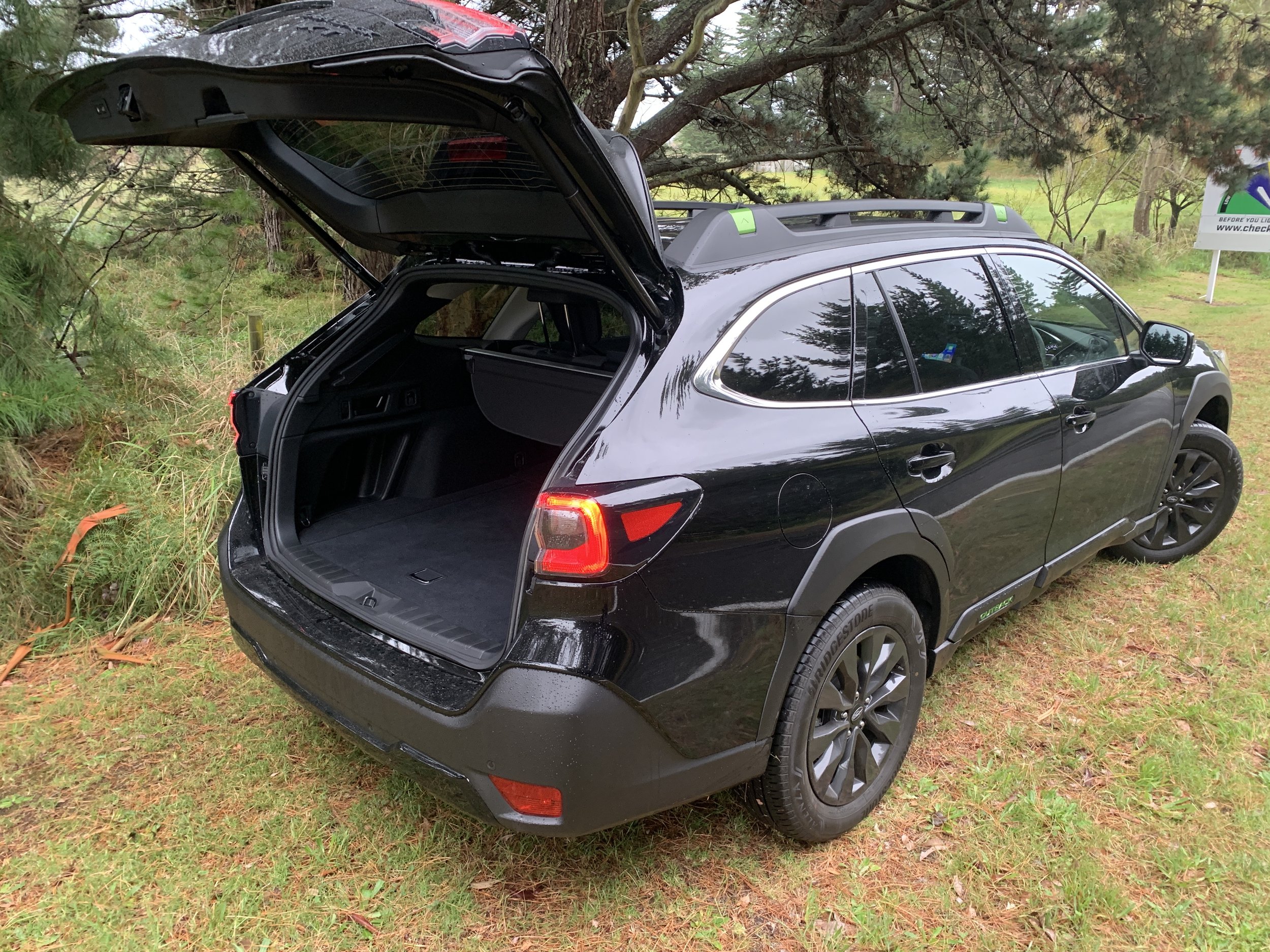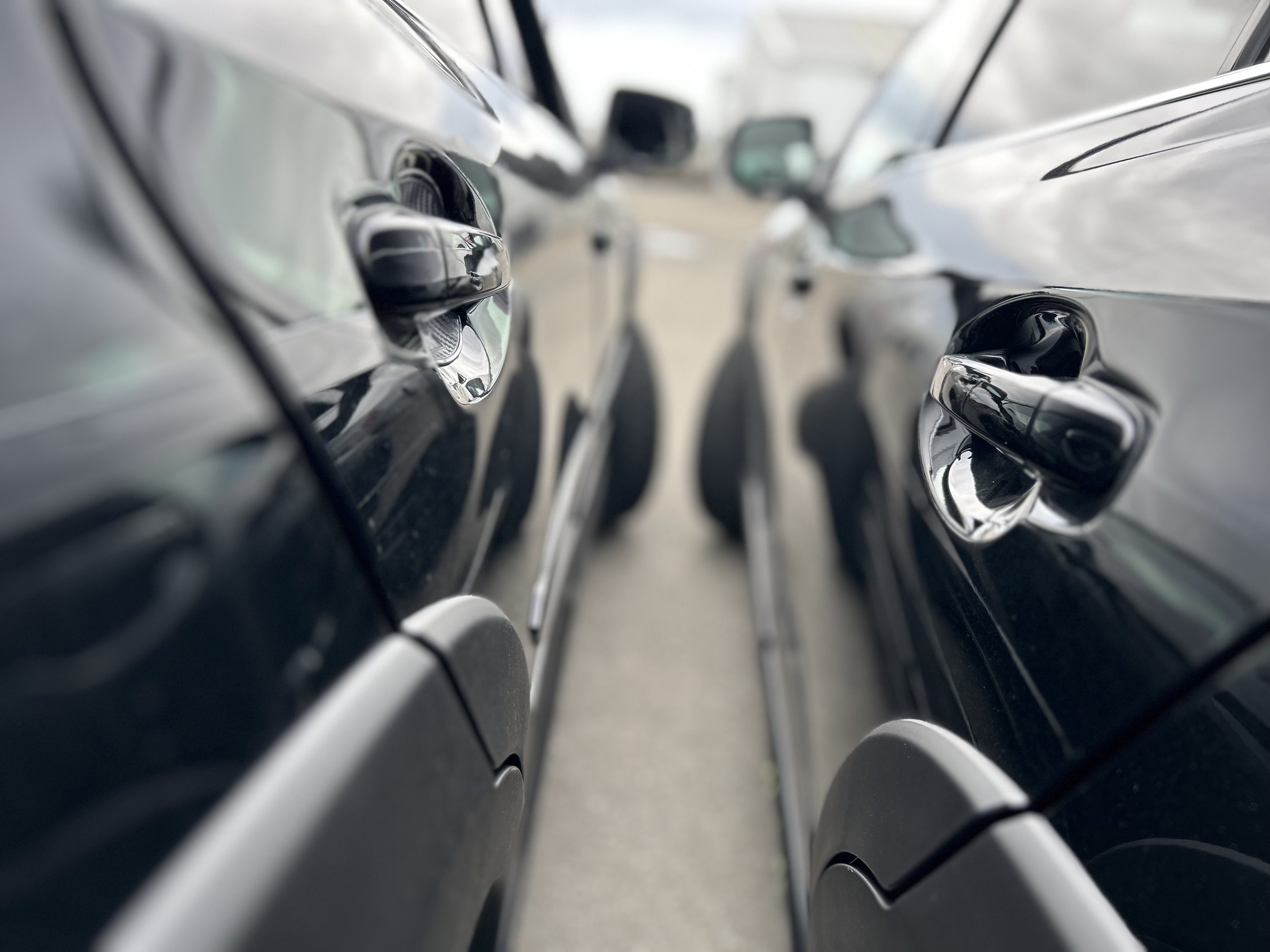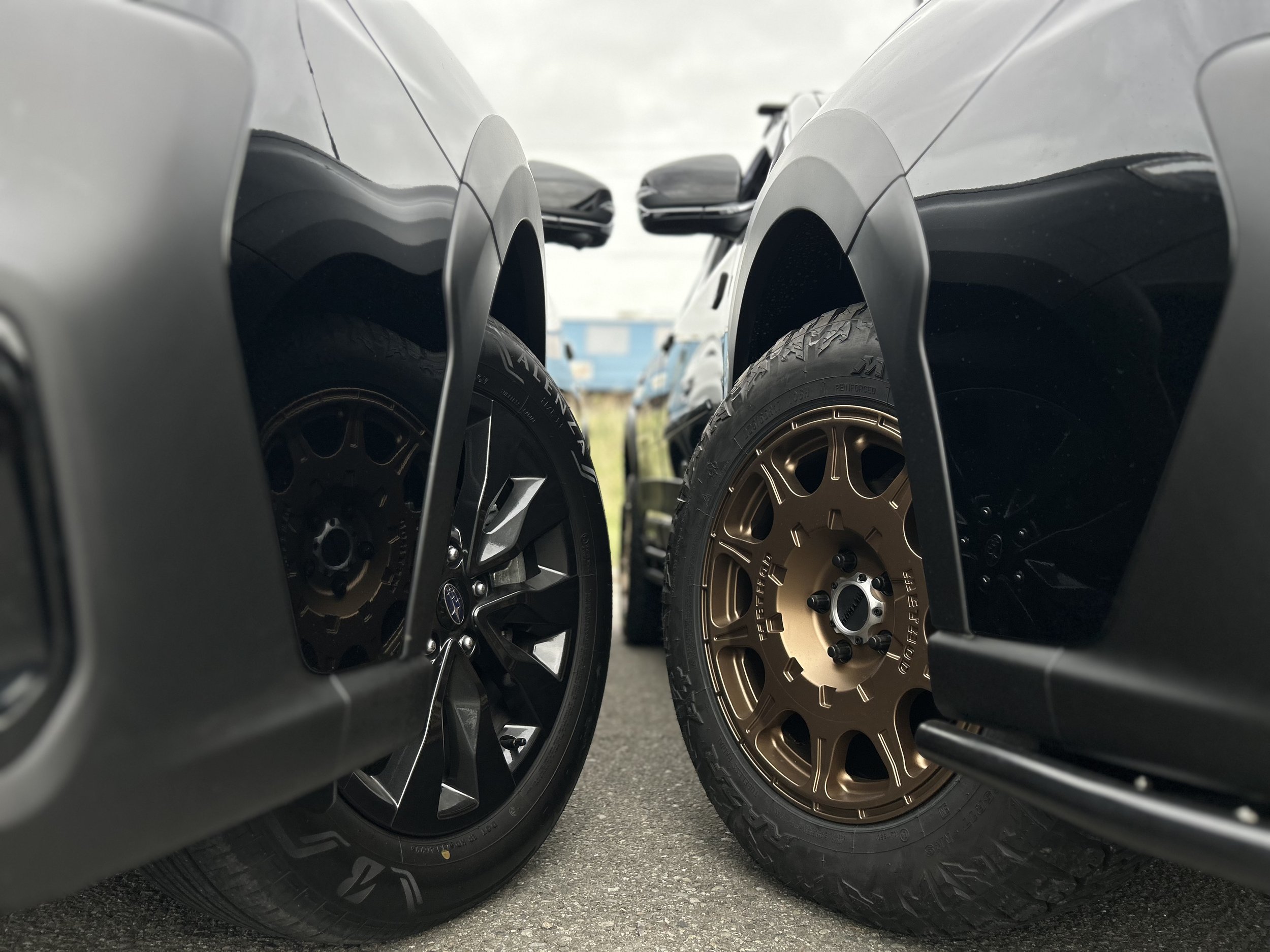Subaru Outback XT roadtest review: Brawn leader
/This talented turbo engine improves the performance envelope without degrading traditional strengths. But it’s no free ride.
Price: $66,990
Powertrain: 2.4-litre turbo-petrol four, 183kW/350Nm, continuously variable transmission, AWD, claimed economy 9.0L/100km, CO2 204g/km.
Vital statistics: 4870mm long, 1875mm wide, 1675mm high, wheelbase 2745mm.
We like: Extra pep to its step, well-matched to CVT, enhances model’s core strengths.
Not so much: Enjoys a drink, in Clean Car’s sights, no wireless phone charging or HUD.
ANGEL on one shoulder, devil on the other … if you’re a Subaru fan, whose opinion do you listen to?
The voice of goodness and enlightenment talks up the future. Like every other brand, Subaru is on verge of surrendering to the inevitability of electric. The battery-pure Solterra, co-developed with Toyota, and set to site between the Forester and Outback in size (but probably not price) is close. Undoubtedly, more of its kind will follow. Go electric and you’re into a new age. Come to the light.
On the other hand… how about what’s being whispered in your other ear? Mr Pitchfork is reminding that change isn’t going to happen overnight. Transition from fossil fuels will take years. Why not let others take the leap? Meantime, how about this for an idea: A go-anywhere, do-almost-anything family wagon with a competition model’s heart? Don’t say you’re not intrigued.
And, so it’s come to be. At a time when everyone else is rapidly downsizing and fitting transverse, hybrid powertrains, if not electric ones … Subaru has rolled back the years in rolling out an Outback with the turbo four-cylinder petrol from the WRX. How crazy is that?
Not as mad as it sounds. The ideal of the Outback XT being a teleport back to a time that really doesn’t make sense any more is not realised.
Those who’ve read the MotoringNZ.com tests will know full well that the WRX today is nothing much like the type that kicked gravel out of special stages all around the world between 1993 to that shock day of World Rally Championship withdrawal in 2008.
The current line is all-paw fun, but is nonetheless less feral and nowhere near tuned for raw-boned feistiness. It need not be, when the maker knows the days when the most of examples of the WRX in its best – meaning STi – form were stripped out for competition is no longer a thing.
Think boy racer grown up, with responsibilities and a receding hairline. It’s still fast, capable and, especially in manual form, a good time for a winding road outing. But gone is the burble and the bang-crash.
And that’s the WRX with full phwoar. Which isn’t in the Outback. While it delivers a not insubstantial 46kW and 105Nm extra over the normally-aspirated 2.5-litre petrol that Outback has had since birth and continues to offer otherwise, the turbo 2.4-litre in this application is nonetheless detuned a touch in transplant from WRX.
End result is that, while torque remains the same in both, the larger car has 18kW less oomph. On top of that, it of course also has more weight to haul.
Disappointed? No way. If anything, tempering the tune makes for a better time. And it’s hardly lacking oomph. Remember, the standard naturally-aspirated 2.5-litre that outback otherwise offers with 138kW and 245Nm. This turbo has 183kW/350Nm. That’s a significant and very welcome power lift that improves not just the pace but also the towing capacity.
All the same, while more pumped, it’s not a Mr Muscle. Maybe Subaru Technica could have turned it into Satan’s sledge, but clearly that wasn’t an opportunity. As is, it’s quicker than the alternate model but won’t cause Audi RS Avant faithful to check their mirrors.
Which means? It’s perfect. As a past owner, I can say that while acclaimed all-round beyond-seal capability is the primary pull for purchase - and rightly so, an Outback off-road is a great device – once you live with one, you come to accept that comfort is also an equally import component.
It’s a car that just loafs along and is all the better for it. The suspension tune for off-roading lends a lovely on-seal ride quality; it’s softer than any other Subaru but not squidgy or squiggly. It tracks assertively but is brilliant at soaking up bumps, ruts and ripples - you just don’t feel them. Citroen would doff a cap.
That side of things largely maintains in the XT. Subaru says the dampers have a different damping force tune and, the front coil springs are also tuned differently, to compensate for the extra performance and the increased towing capacity. All in all, though, the sum total of change is subtle. It’s perhaps a touch stiffer, but the overall ride is still quite compliant. It’s no more a sporty sports utility than any other Outback. Pressing on into bends reinforces this; as with the other derivatives, there’s body lean and beyond that, tyre squeal. You get impression it’s the brilliant all-wheel-drive that keeps it feeling safe and secure.
As much as Subaru has recognised that the turbo engine will meet the hopes and wishes of customers wanting an engine that was more reactive than the alternate, they also acknowledge giving it something overly steroidal would defeat the overall ethos.
The turbo balances nicely between extremes; its more reactive, not an outright rocket.
But, yes, it’s faster. Subaru’s stopwatch says it knocks a full two seconds off the standard car’s 0-100kmh time – which is all but an eternity – but you don’t need that as a reference of its additional oomph. This is plainly felt.
The languor associated with the normally-aspirated unit is banished; there’s sharper and more reactive step-off and definably more mid-range muscle; with maximum torque generates at just 2000rpm, it’s still audibly relaxed, but in overtaking in particular there’s more to play with.
Old fans who knew the 3.6 will pick up that the torque output is the same. That might be true, but delivery if this (and power) is different. The six was silky, but I prefer the turbo four. It’s liveliness is one reason. The car’s balance is also better. That six was a heavy old thing to bung in the nose.
Another positive in this relationship is that with the auto. It’s not a perfect match, and I’m still not sold on CVTs, but at least the transmission has more meat to chew on, so the shifts are smoother, more confident heading into the thrall of linear acceleration. There’s a sports mode to liven things up but, really, it’s not a must-use by any means; same goes for those paddles.
So the concept pays off. But, of course, you also pay. It’s the most expensive Outback and has become dearer since launch. On top of that, customers have to foot a Clean Car penalty; whereas the 2.5 is carbon neutral, the 2.4 lands a $2357 bill. Plus Subaru NZ is passing on the impact of the Clean Car Standard, the penalty distributors carry for every high CO2 car they sell.
If that weren’t enough of a burden … there’s the fuel consumption. Subaru’s flat fours of today are not the heavy drinkers they used to be, but the turbo has no better chance of snaring a Green car of the prize than the normally-aspirated garden variety type.
On this beat, a return of 9.7 litres per 100km was at least within coo-ee of the factory-cited overall, and not that much higher than I’ve seen from the naturally-aspirated engine, but it’s still a return that sets no positive standard within four-cylinder boundaries. The car was also only running two-up, with no other load, and lacked a tow bar so couldn’t be used for hauling. Colleagues who back-to-back tested the 2.5 and 2.4 cars saw 7.3L/100km combined and 9.3L/100km in town and 9L/100km and 12L/100km respectively. And, by the way, this engine demands a top shelf tipple; nothing less than 95 octane is accepted. Filling the tank from empty is conceivably going to cost up to $190 a time.
Quite potentially, if all that can be shouldered, the car in its entry XT format as driven would be good enough. It’s basically the non-turbo X with extra oomph; otherwise the same look - with bright green detailing and darkened alloys – and the same sensibilities of a robust trim well suited to recreational users the brand naturally attracts. The $4000 XT Touring has some tasty additional features, but if you’re one to head into the wild and best use of the car’s functional aspects, the Nappa leather the top dog represents with is less friendly to muck than the XT’s water-repellent seat fabric, which I also think has a nicer feel to it.
Speaking of. Because of the way it drives, because I just have a thing for large and capable station wagons – which is what it is – and because there just so many Subaru-isms that make sense especially well in this car, Outback to me has become an automotive equivalent of a comfort food you might not have tried for a while but, as soon as you do, good memories arrive.
In XT trim it is solidly provisioned. You don’t secure Touring’s sunroof and Harman Kardon audio, but the factory audio is still easily good enough and I prefer metal rather than glass above my head. The cheaper spec still delivers dual zone climate control, rain sensing wipers, smart key and start, heated seats for four (a rare inclusion), and eight-way power adjustability for the driver’s chair. Sorted, I’d say.
In terms of its electronic architecture, outback is better provisioned than any other combustion-engined Subaru. The iPad-like vertical 11.6-inch infotainment screen, the X-mode all-wheel-drive and the EyeSight drive monitoring system are strong attractions.
Improvements have been wrought. The multi-function steering wheel controls are fewer and less fussy. Apple CarPlay and Android Auto now fills the whole screen and links wirelessly. More improvement could have occurred. The lack of an inductive phone charging pad is irksome. It still bucks the modern trend by lacking a digital dashboard or a head-up display. The latter would be useful given the breadth of its competency.
Eyesight is a solid system, but the Driver Monitoring System is over-zealous is ensuring the driver maintains attention; if changing an audio setting on the move, for instance, you need to you need to be quick about it, else risk electronic reprimand. It’s another car with over-attentive lane keeping, too.
Being a five seater in a category when three rows, for seven occupants, is increasingly becoming the usual configuration might well create some conversation. Personally I’m happy with as it lays out. There’s good room all around, it has great seats and the boot is usefully capacious, with 522 litres. But then, there’s just the two of us, with two dogs.
I do like the Outback look, but was intrigued when comparing the test model with a sister cat that was the basis for a re-fit with a suspension and styling enhancement that Subaru America created and calls its Wilderness pack.
Stateside treat enhancements that outdoorsy elements 10-fold; there’s no metalwork change – everything’s bolt-on with Wilderness but the end result is a car that looks wider and stands tangibly taller. Outback is already handily lofty, with 213mm ground clearance, but Wilderness lifts it further, to point that when parked alongside each other, the top of the XT’s door mirror was markedly lower. And check out the rear door handle heights!
Notwithstanding the pack transfers perfectly onto the right-hand-drive car, if you want it, you’ll have to source everything individually, as this owner did, and bolt it on aftermarket.
Though that part is time consuming, it is reasonably straightforward; almost as easy as sourcing all the bits it. Subaru US has a catalogue and you can get everything, badges included.
Shipping is expensive but what keeps it off the table is the elevated ride height. It’s significant enough to almost certainly require any factory-provisioned car to require a new round of ANCAP testing. That’s extremely expensive. As is, application to an individual car requires certification.
Still, the end result is a handsome enhancement of that ‘up-for-anything’ ambience and even if NZ restricted to the plastic cladding changes, the car would hardly suffer.
Outback’s a car that I just find easy to like. We loved ours and, as soon as she slipped in as a passenger, the first question my wife asked was if we would think about getting another. It’s a good question. Subaru engineering is solid and, by and large, the design logics are solid. It’s a model that stands on its sensibility. In many ways, this engine is just the right thing; it’s the powerplant the car should have had from the start.
And, yet … as much as this XT is in some ways the Outback you wish you could have, everything becomes complicated by the base sticker being high, the Clean Car impost being hurtful and the probability that fuel costs will be barely better than they were for the 3.6. Which is one reason why the six-cylinder was dropped.
I can see why Subaru created this derivative. The engine was available and the rework was likely very straightforward as all modern combustion-engined Subarus are on a common architecture.
But why only now? Could it be that its prime role is to keep the customer base occupied until something better sorted for this changing world is ready for action?
The electric age is here. Outback cannot avoid it. The sense of this car picking up electric enhancement is obvious. At the very least it would demand a mild hybrid system – though one that needs to be much better than that already in circulation. At most it requires redevelopment into becoming an electric big brother to the impending Solterra.
Where is that car? The United States accounts for 75 percent of Subaru’s volume. In February, Tomoaki Emori, Subaru's chief general manager of global planning, mentioned that Subaru needs “strong hybrids and electric vehicles” and that the brand will need to offer “several models in (their) EV lineup” in the US by 2025. So there’s a sign. And, unlike the Wilderness pack, an electric Outback wouldn’t be kept Stateside.

























